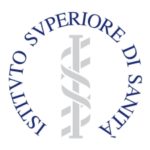
Written by Alison Maassen, EuroHealthNet, and Luisella Gilardi, on behalf of the DoRS working group on health inequalities
The EuroHealthNet Thematic Working Group on Health Promotion and Disease Prevention Programme Registers
In 2019, EuroHealthNet members established a Thematic Working Group (TWIG) on Health Promotion and Disease Prevention Programme Registers, more commonly referred to as “good” or “best practice portals.” These portals, which exist at national level in some EU countries as well as at European level, are designed to help practitioners, policy makers and researchers to find evaluated tools and interventions for health promotion and disease prevention. The primary objective of the portals is to facilitate the transfer and scale of such practices, in order to ultimately improve health promotion and disease prevention efforts both within countries and across Europe. As you will see below, there is also a new portal in Italy which is focused specifically on sharing equity-oriented practices.
Making these portals attractive and useful for both intervention owners and end users is key to success. The members of the TWIG, representing EuroHealthNet members from across eight countries, have created a community of practice where they can exchange their experiences in designing and managing these portals, as well as initiate joint projects and share findings in scientific journals and international conferences. The working group remains open to all EuroHealthNet members working on related themes, who can join at any time.
The group is prioritising:
- Contributing to the evidence base through international conferences and scientific publications
- Establishing ‘core criteria’ or minimum standards of evidence for programme registers
- Supporting research to design a transferability tool for health interventions
- Exploring the potential for further linkages between national portals and the EU Best Practice Portal.
TWIG Achievements
In October 2020, the TWIG presented at the World Congress on Public Health, exploring the themes of improving the uptake of best practices. Participants heard insights into relevant approaches and infrastructures to improve uptake of practices in several countries. TWIG members are also currently preparing a scientific publication. It will offer a comparative analysis of the existing and planned national portals represented in the group. As a part of the analysis, members will explore the ‘core criteria’ or ‘core components’ that are central to all portals. This will be an important contribution to existing literature on the design and implementation of portals, particularly in the European context.
In November 2020, the TWIG co-led a series of focus groups in collaboration with Maastricht University and BZgA (the German Federal Centre for Health Education). During these focus groups, more than 40 international and European experts in transfer and implementation of health interventions provided their feedback on the development of a practical tool to support transferability of health interventions from one setting to another. On the basis of findings from these focus groups, additional analysis and tool development will continue in 2021.
The TWIG has also maintained regular communication with representatives from the European Commission, which manages the European Best Practice Portal. These discussions have included potential ways in which the links between national and European-level portals could be built and areas of potential collaboration.
Most of the portals represented in the TWIG are focused on health promotion and disease prevention. However, a new portal established by the Health Promotion Documentation Centre (DoRS) and the National Institute of Health (ISS) has a unique focus on equity. The Catalogue of Equity-Oriented Actions (CARE).
The Catalogue of Equity-Oriented Actions (CARE)
“When the house burns, the fire must first be put out.” But once it is extinguished, it will be necessary to rebuild it with fireproof material. With this metaphor, we should rethink about prevention and health promotion, once the health emergency due to the pandemic has been overcome. It is necessary to reflect on new models of assistance, prevention and health promotion that involve both the community and the territory and that engage all policies.
It is important that no one is left behind, that we restart together, with special attention given to the people who were or have become more fragile and vulnerable following the pandemic. For this reason, we need both human and economic resources, but above all good ideas. It is with this in mindset that CARE, a catalogue of equity-oriented actions, was created. It is a database containing examples of interventions carried out in Italy, in Europe, and in other countries with welfare characteristics similar to those in Italy and Europe. This includes specific actions carried out in small territories, or part of broader policies applied to municipal or regional contexts.
Who is it for?
It is for health and social workers, teachers, stakeholders from various fields and decision makers at local, regional and national level.
Where do the practices come from?
In most cases, these are practices that come from internationally accredited repositories. They are selected on the basis of the following criteria: being focused on equity and dealing with health issues included in the new national prevention plan. There are also the practices presented and evaluated as part of the Joint Action – Health Equity Europe currently underway. For this reason many of them do not have an impactful assessment yet. In a few cases, practices that do not come from accredited repertoires have been included. The criteria for the inclusion of these was the focus on equity and the coverage of issues not included in the reference repertoires.
How many practices does it contain?
At the moment 93, but the implementation will be continuous. Any reader can recommend a practice that will be evaluated and, if adequate, subsequently included in CARE.
The Documentation Centre for Health Promotion of Piedmont Region (DoRS) in collaboration with the Istituto Superiore di Sanità (ISS) coordinate this initiative, as part of the Equity in Regional Prevention Plans project, funded by the National Center for Disease Prevention and Control of the Ministry of Health (Ccm). CARE is freely available for non-commericial use at https://www.dors.it/CARE/index.php
The members of Dors Team are Antonella Bena, Paola Capra, Umberto Falcone, and Renata Leardi.
The members of ISS team are Benedetta Mattioli, Loredana Falzano, and Raffaella Bucciardini





